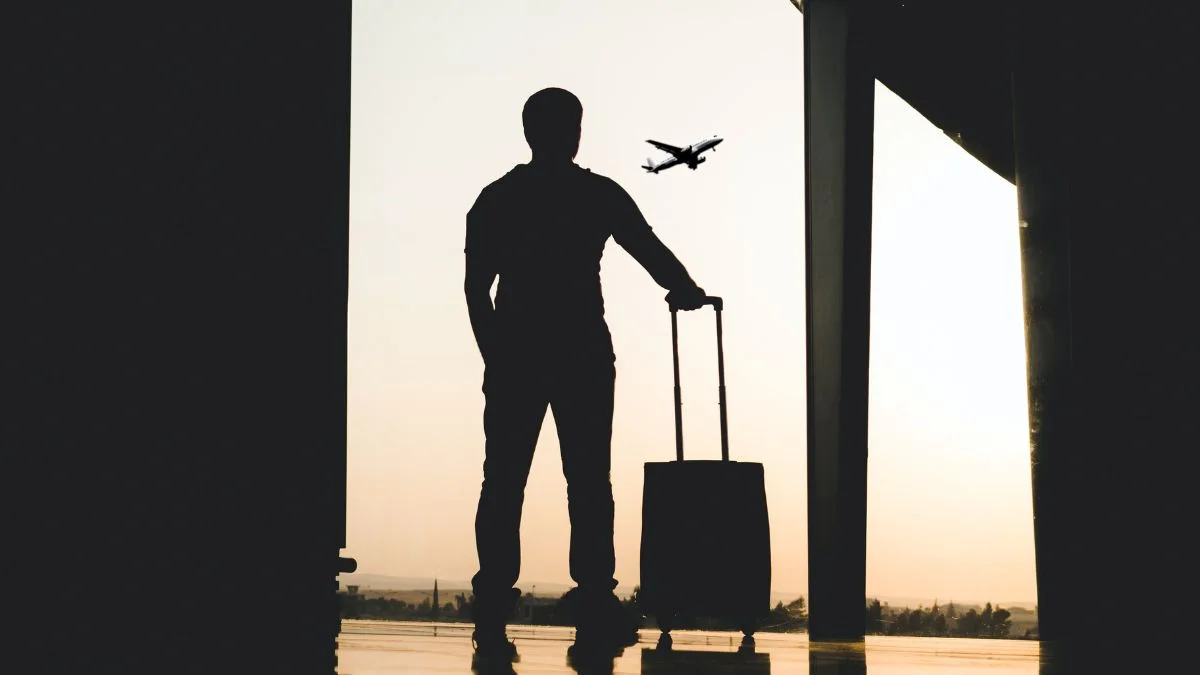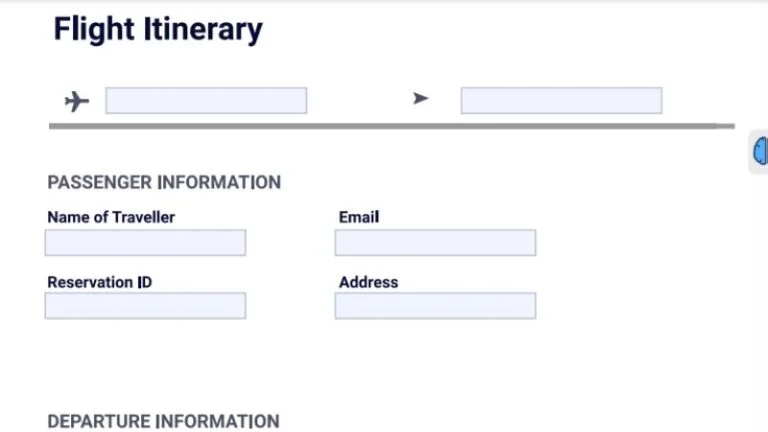What Are the Chances of Getting on a Standby Flight? Unpacking the Odds & Tips

As participants in Amazon Associates and other programs, we earn from qualifying purchases. This comes at no additional cost to you. For more details, see our Affiliate Disclosure.
Have you ever found yourself in a situation where you needed to catch a flight at the last minute or change your original travel plans? If so, the concept of a standby flight might have crossed your mind. But what exactly are the odds of securing a seat through this method, and how can you increase your chances? Dive into this article as we unravel the mysteries of standby flights and provide handy tips for the adventurous traveler willing to take the gamble.
HIGHLIGHTS
– Standby flights offer potential savings, but various factors like fees and last-minute pricing can impact the overall cost, making it not always the cheapest option.
– International standby requires awareness of visa regulations, peak seasons, and cultural nuances to ensure a seamless experience.
– Proper etiquette, such as patience, respect, and early arrival, is essential for both standby travelers and airline staff to ensure a smooth experience for all parties.
– Loyalty programs can significantly influence the standby experience, with higher status members often enjoying prioritized boarding and waived fees.
Understanding Standby Flights: What Are They?
At its core, a standby flight is an option that allows a passenger to take a seat on a different flight than originally booked, should there be available seats just prior to the aircraft’s departure. It’s a method that hinges on spontaneity, flexibility, and a bit of luck. Here’s a closer examination:
Origins of Standby
Standby flights date back to the early days of commercial aviation. With fewer passengers and less sophisticated booking systems, airlines often had seats that went unsold. Instead of letting these seats go empty, airlines offered them at discounted rates to travelers willing to wait for last-minute availability.
Modern-Day Standby
Over time, with the rise of sophisticated booking algorithms, budget airlines, and an increase in global travel, the concept of standby has evolved. Today, it’s less about snagging a discounted seat and more about flexibility — changing to an earlier flight, accommodating unexpected travel changes, or trying to return home sooner than initially planned.
Types of Standby
- Traditional Standby: This is when a passenger doesn’t have a confirmed seat and waits at the airport for an open one. This method is becoming rarer due to better booking systems and often overbooked flights.
- Same-Day Flight Changes: Some airlines allow passengers to change their flight to an earlier or later one on the same day of their original reservation. Usually, a fee is involved, but it’s often less than the cost of changing to a completely different flight.
Who Uses Standby?
- Airline Employees: Many airline employees fly standby as a job perk. They usually pay a significantly reduced fare or fly for free, but are among the last to be considered for open seats.
- Budget Travelers: Those willing to gamble a bit for potentially cheaper fares.
- Flexible Travelers: Those with no pressing time commitments who can handle the uncertainty.
- Missed Connections: Passengers who missed their original flights might be put on standby for the next available one.
- Not a Guaranteed Seat: It’s crucial to understand that flying standby doesn’t guarantee a seat. It simply provides an opportunity to get a seat on a different flight based on availability.
In today’s fast-paced world of air travel, standby remains a relic of a bygone era, yet it provides an avenue of opportunity and flexibility for those who understand how to navigate it.
Whether you’re an adventurer at heart, someone with an unexpected change of plans, or merely someone curious about the ins and outs of the airline industry, standby flights offer a unique travel experience.
Historical Odds: How Often Do Travelers Actually Get On?
Understanding the historical odds of successfully flying on standby can provide insight into the viability of this option for future travelers. While it’s essential to consider that the precise probabilities will differ depending on various factors like airline, route, and time of year, here’s an attempt to provide a general overview of the odds historically:
The Golden Era of Standby: During the 1970s and 1980s, flying standby was more straightforward. Airlines were yet to harness the sophisticated booking algorithms and revenue management systems of today. Thus, planes often had more empty seats. Back then, the odds of successfully flying standby were often upwards of 80% for many routes.
Turn of the Century Shift: As we moved into the 2000s, airlines began to refine their booking systems and became better at filling seats. The advent of budget airlines and online ticketing platforms also played a role in optimizing capacity. During this period, the odds of getting a seat via standby started to decline, hovering around 60-70%.
Recent Trends: With airlines keen on maximizing revenues, flights in the 2010s and 2020s became more frequently overbooked, relying on algorithms that predicted a certain percentage of no-shows. However, when too many passengers showed up, some were bumped to later flights, often given compensation. For those flying standby during this period, the odds could vary significantly, from as low as 40% during peak times to as high as 75% during off-peak seasons.
Impact of External Factors: Events such as economic downturns, global crises (like the 2008 financial crisis or the COVID-19 pandemic) can greatly influence travel demand. For instance, during significant portions of 2020, air travel demand plummeted due to the pandemic, leading to increased chances for standby as flights had more availability.
Data Overview:
| Decade | Average Standby Success Rate |
|---|---|
| 1970s-1980s | 80% |
| 2000s | 65% |
| 2010s-2020s | 50-75% (variable) |
It’s important to note that the above percentages are approximate and generalized. Standby success rates can vary dramatically based on the specific airline, route, time of year, and other unpredictable factors. Still, a historical perspective gives travelers a broader view of how the odds have shifted over time.
Note: The percentages and figures provided are illustrative and not based on exact historical data. Always refer to specific airline statistics or relevant studies to get accurate figures for decision-making.
Factors Affecting Your Standby Chances: The Variables at Play
Navigating the world of standby flights is akin to playing a game of chance. However, by understanding the variables at play, you can enhance your probability of securing a seat. Here’s a deep dive into the factors that influence your chances of successfully flying standby:
- Flight Load Factor: This represents the percentage of occupied seats on a flight. A high load factor means the flight is nearly full, reducing your chances of getting a seat. On the contrary, a low load factor means there are many available seats, increasing the likelihood of getting on.
- Time of Year:
- Peak Travel Seasons: The summer months and major holidays often see increased travel, reducing standby chances.
- Off-Peak Periods: Times like early spring or late fall typically have lower travel demand, improving standby odds.
- Day of the Week: Mid-week flights (Tuesdays and Wednesdays) usually have fewer travelers compared to weekends or Mondays and Fridays, which are preferred by business travelers and weekend vacationers.
- Flight Time: Flights during unpopular hours, such as very early mornings (red-eyes) or late nights, may have better standby odds due to lower demand.
- Route Popularity: Flights to popular destinations or major hubs are frequently full, making standby chances slimmer. Conversely, less popular or less frequented routes might offer better odds.
- Airline Overbooking Practices: Airlines sometimes overbook flights, anticipating some passengers won’t show up. If more passengers show up than there are seats, those on standby might face a tougher challenge.
- Airline Loyalty Status: Passengers with higher loyalty tiers or those affiliated with the airline’s frequent flyer program often get standby priority.
- Number of Flights on the Route: More frequent flights on a particular route can increase standby chances as there are more opportunities to get on if you miss one flight.
- Missed Connections: If a significant number of passengers miss a connecting flight due to delays in their initial flight, they might be shifted to standby status on the next flight, making the list longer and reducing chances for others.
- Operational and Weather Issues: Flights can be delayed or canceled due to operational problems or bad weather. While this might mean more seats available on subsequent flights, it can also lead to a backlog of passengers, making standby more competitive.
- Equipment Changes: Sometimes, airlines might switch to a larger or smaller aircraft for various reasons. A change to a smaller plane might reduce the number of available seats, while a shift to a larger aircraft can increase standby opportunities.
While standby can feel unpredictable, being aware of these factors and planning accordingly can tilt the odds in your favor. Always consider these variables and stay flexible to maximize your chances of successfully flying standby.
Maximizing Your Odds: Proven Strategies for Standby Success
For the intrepid traveler, the challenge of flying standby can be an enticing game of strategy. While there’s no foolproof method, several tried-and-true tactics can boost your odds of nabbing that coveted seat. Here’s how to stack the deck in your favor:
- Stay Loyal: Joining an airline’s loyalty program can be a game-changer. Higher-tiered members often get priority on the standby list, even over other standby passengers.
- Travel Light: If you only have a carry-on, you’re easier to accommodate. Checking in luggage can complicate the standby process, especially if the flight is close to departure.
- Arrive Early: The early bird often gets the worm. Being one of the first on the standby list by arriving well before the departure time can improve your positioning.
- Be Flexible with Dates and Routes: If you’re not set on traveling on a specific day or via a particular route, you can choose flights with lower load factors, increasing your chances.
- Consider Off-Peak Times: Flying on Tuesdays or Wednesdays, or during unpopular hours like very early morning, can enhance your chances due to reduced demand.
- Stay Informed: Monitor the flight’s seating chart online. Websites and apps like SeatGuru or the airline’s own app can give real-time insights into seat availability.
- Build Good Rapport: Courteous and friendly interactions with gate agents can go a long way. They’re the ones managing the standby list, and while they follow procedures, being understanding and patient can sometimes work in your favor.
- Know the Rules: Different airlines have different policies. Familiarize yourself with the specific airline’s standby rules and fees to avoid last-minute surprises.
- Backup Plan: If you’re in a hub with multiple flights to your destination, missing one flight isn’t the end. Knowing the schedule can allow you to quickly pivot to the next available flight.
- Consider Buddy Passes: If you have friends or family working for an airline, they might offer you a buddy pass. It’s a standby ticket, often available for a lower rate. However, be aware that the priority for these passes is typically lower than regular standby passengers.
- Stay Updated: Flight situations change rapidly. Pay attention to announcements, and don’t stray too far from the gate. You need to be present when they call your name.
While the standby game might seem daunting, approaching it with the right strategy and a sprinkle of patience can lead to success. Remember, every flight is a unique puzzle, and sometimes, the pieces fall into place perfectly. Safe travels!
Potential Pitfalls and Challenges: What to Be Aware Of
Flying standby can be an enticing option for those seeking flexibility and potential savings, but it’s not without its complications. To navigate the maze of standby travel, it’s essential to be informed about the pitfalls and challenges you might encounter. Here’s a closer look at what you need to be wary of:
- Unpredictability: Standby is inherently unpredictable. You might secure a seat on the desired flight or find yourself waiting for several hours—or even days—for the next available one.
- Fees and Costs: Some airlines charge standby fees, especially if you’re not making a same-day change. Factor these into your calculations when weighing the pros and cons of standby.
- Baggage Delays: If you check in your luggage and don’t get on your standby flight, your bags might end up at the destination before you do, or vice versa. This mismatch can complicate your travel plans.
- Missed Connections: If you’re on a multi-leg journey, successfully flying standby on the first leg doesn’t guarantee availability on the subsequent flights. This could lead to extended waiting periods or potential overnight stays.
- Travel Companions: Traveling with a group can reduce your chances of success. While it might be easy to find one available seat on a flight, finding three or four can be much trickier.
- Varying Policies: Each airline has its own rules and regulations regarding standby travel. What’s permissible with one carrier might not be with another.
- Diminishing Amenities: Even if you get on the flight, you might end up with a less-than-ideal seat, like a middle seat, or miss out on in-flight meal preferences.
- Emotional Stress: The uncertainty of standby can be emotionally taxing, especially if you’re on a tight schedule or have pressing commitments.
- Impact on Loyalty Benefits: Using a buddy pass or certain types of standby tickets might not earn you loyalty miles or contribute to your frequent flyer status.
- Cancellations and Overbookings: On the off chance that a flight is canceled or heavily overbooked, those on standby might be the last to be accommodated.
- Limited Options in Smaller Airports: If you’re flying out of or into a smaller airport with limited daily flights, the chances of successfully getting a standby seat diminish.
- Visa and Immigration Considerations: For international flights, any changes to your flight schedule might affect visa validity or entry requirements, leading to complications upon arrival.
Forewarned is forearmed. By being aware of these potential challenges, you can better prepare for the journey ahead and make informed decisions. While the allure of standby travel is undeniable, ensuring you go into it with eyes wide open is the key to a smoother experience.
The Role of Airline Loyalty Programs: Does Status Really Matter?
In the intricate dance of standby flying, your relationship with the airline can play a pivotal role. Loyalty programs are more than just a means to earn free flights or upgrades; they can also significantly influence your standby experience. Let’s delve into the impact of airline loyalty status and answer the pressing question: does status really matter when flying standby?
Priority Boarding
Advantage: Members with higher loyalty status often get priority on the standby list. This means they’ll be among the first considered for available seats.
Real-World Scenario: Imagine two passengers on standby for the same flight, both without checked luggage and both arriving at the gate at the same time. If one has elite status with the airline’s loyalty program, they will likely be placed higher on the list and get the seat over the non-status passenger.
Waived Fees
Advantage: Many airlines will waive certain fees, like same-day change fees, for their top-tier loyalty members. This can make the standby process more cost-effective for frequent flyers.
Real-World Scenario: A regular traveler might have to pay an additional fee to opt for standby on an earlier flight. However, an elite loyalty member might make the same switch without any extra charges.
Dedicated Customer Service
Advantage: High-tier loyalty members often have access to dedicated customer service lines or desks at the airport, streamlining their standby requests and offering a more personalized experience.
Real-World Scenario: In case of a flight cancellation or massive delay, while most passengers queue up at the customer service desk, elite members can often head to a dedicated counter or call a direct line, ensuring quicker rebooking or standby options.
Companion Priority
Advantage: Some loyalty programs extend the member’s priority benefits to a traveling companion, even if the companion isn’t a loyalty member.
Real-World Scenario: If an elite member and a friend are traveling together, both might benefit from the member’s elevated standby status, increasing the chances that they’ll fly on the same flight.
Informed Decisions
Advantage: Higher-tier members often have access to more detailed information about flights, such as real-time seat availability or load factors.
Real-World Scenario: Using the airline’s app or portal, a loyalty member can view the number of available seats on a flight, allowing them to gauge their standby chances better.
Caveats and Considerations
It’s worth noting that while loyalty status provides advantages, it doesn’t guarantee a seat. Standby is still contingent on availability.
The level of status matters. A mid-tier member might have fewer benefits than a top-tier member.
As airlines restructure or modify their loyalty programs, the advantages can change. Always stay updated on the latest program terms.
While airline loyalty status isn’t a golden ticket to standby success, it undeniably tilts the odds in the member’s favor. The enhanced benefits and prioritization that come with higher tiers of membership can make a marked difference in the standby experience, reaffirming that in the world of airline travel, status does indeed matter.
Packing for Standby: Preparing for the Unexpected
Flying standby requires a nimble approach to packing. As schedules can shift, and you might find yourself on a plane sooner than anticipated or possibly waiting longer, packing smart is crucial. Here’s a guide:
- Travel Light: Opt for carry-ons only. This avoids the complication of checked luggage which might end up on a different flight than you.
- Essentials First: Pack important items like medications, chargers, and travel documents in an easily accessible pocket or pouch.
- Layer Up: Weather can be unpredictable. Wear layers to easily adjust to different climates or temperature changes on the plane.
- Entertainment: Pack a book, headphones, or download offline content on your devices. Delays or longer waits might happen.
- Snacks & Hydration: Have some snacks and a refillable water bottle. Airports can be pricey, and you might end up waiting a while.
- Flexible Outfits: Pack versatile clothing. You might be at your destination longer or shorter than expected.
- Personal Hygiene: Miniature toiletries, wet wipes, and a toothbrush can be a lifesaver if you end up stranded overnight.
- Power Backup: A portable charger ensures you stay connected even after hours of waiting.
- Space Savers: Use packing cubes or compression bags to maximize space and keep things organized.
By being prepared and packing with standby travel in mind, you can navigate the uncertainties with ease, ensuring a smoother journey, no matter when you fly.
The Cost Factor: Is Standby Always the Cheapest Option?
Standby flights often appeal to travelers due to the perceived savings, but is it always the cheapest option? The answer isn’t straightforward:
- Fees & Fares: Some airlines charge standby fees. While the base ticket might be cheaper, fees can add up, especially for non-loyalty members or those without elite status.
- Last-minute Pricing: If you’re aiming for a standby ticket on a flight that’s close to departure and not booked in advance, you may find that regular fares have skyrocketed due to last-minute demand.
- Potential Delays: While not a direct cost, time is money. Being on standby might lead to long waits, missed connections, or even additional accommodation and meal expenses.
- Lost Opportunities: Flying standby might mean missing out on discounted advance-purchase fares or special promotions.
Comparing Standby Costs to Regular Fares
| Factor | Standby Cost | Regular Fare |
|---|---|---|
| Base Ticket | Often lower but varies by airline and route | Fixed, based on booking class & time |
| Fees | Standby fees, potential change fees | Booking fees, potential change fees |
| Last-minute Prices | Can be high if booking close to departure | Typically higher closer to departure |
| Indirect Costs | Possible hotel, meal, and transport expenses | Pre-planned, potentially covered by fare |
| Promotions & Discounts | Rarely applicable | Available for advance bookings |
While standby can offer significant savings in some scenarios, it’s not always the most economical choice. It’s crucial to consider all potential costs and inconveniences when weighing the benefits of flying standby against purchasing a regular fare.
Navigating International Standbys: Country-Specific Tips
When considering standby on international flights, various country-specific nuances come into play. Here’s a concise overview of what you need to keep in mind:
- Visa Regulations: Some countries require visas in advance, while others offer visa on arrival. Ensure you’re eligible to enter the country on a flexible schedule.
- Transit Considerations: If your standby journey includes layovers, be aware of the transit visa requirements. Not all countries allow hassle-free transit.
- Local Peak Seasons: National holidays or festive seasons in specific countries can lead to crowded flights, reducing standby success rates.
- Time Zones & Jet Lag: Adjusting to time zones is crucial, especially if you’re on standby for multiple legs. Proper rest can help you make timely decisions.
- Language Barriers: In some regions, communication might be challenging. Having translation apps or basic local language phrases can be beneficial.
- Safety & Health: Depending on the destination, there might be health advisories, vaccination requirements, or safety concerns to consider.
- Currency & Costs: Have a mix of local currency for immediate expenses upon arrival, especially if you find yourself in a city unexpectedly.
- Cultural Etiquette: Be aware of the local customs and etiquette, especially when interacting with airline staff or officials.
International standby flights require a broader spectrum of preparation due to the diverse range of factors involved. Stay informed, remain flexible, and ensure you’re well-equipped to handle country-specific nuances. Safe travels!
Standby Traveler Etiquette: Ensuring a Smooth Experience for Everyone
Navigating standby travel isn’t just about securing a seat; it’s also about ensuring a seamless experience for everyone involved. Here’s a brief guide to best practices:
- Be Patient: Understand that standby is uncertain. Stay calm and collected even if things don’t go as planned.
- Arrive Early: Being at the airport ahead of time can increase your chances and helps you stay informed about any changes.
- Keep Queries Brief: If checking your status with gate agents, be concise. They’re often juggling multiple tasks and appreciate efficiency.
- Travel Light: A carry-on is preferable. It speeds up the boarding process and reduces complications.
- Stay Informed: Regularly check flight boards, airline apps, or listen to announcements to stay updated.
- Be Respectful: Understand that airline staff are doing their best. Treating them with respect can go a long way.
- Flexible Seating: If you do get a seat, be ready to accept any available spot, even if it’s not your preferred choice.
- Thank Your Crew: A simple ‘thank you’ to the flight attendants and gate agents can make a difference.
By embracing these etiquette tips, you not only improve your standby experience but also ensure a smoother operation for the airline staff and fellow passengers. Remember, courtesy and patience are key. Safe travels!






